Growing plants in a dark room can be challenging, but it’s not impossible! Many plants thrive in low-light environments, making them perfect for spaces with minimal sunlight. These low-light champions not only enhance the aesthetics of your home but also improve air quality by filtering out toxins and increasing humidity.
In this guide, we’ll explore 17 of the best plants for dark rooms, highlighting their unique features, care requirements, and benefits. Whether you’re looking for a touch of greenery for your office, bedroom, or bathroom, these plants will flourish even in dim conditions.
Criteria for Selecting Plants for Dark Rooms
When choosing plants for dark rooms, it’s essential to consider:
Low-Light Tolerance – The ability to thrive in minimal sunlight.
Low Maintenance – Adaptability to indoor conditions with minimal care.
Aesthetic Appeal – Attractive foliage, unique shapes, or decorative qualities.
Air-Purifying Benefits – Ability to remove toxins and improve air quality
With these criteria in mind, let’s dive into the best plants that will brighten up even the darkest corners of your home!
1. Snake Plant (Sansevieria trifasciata)
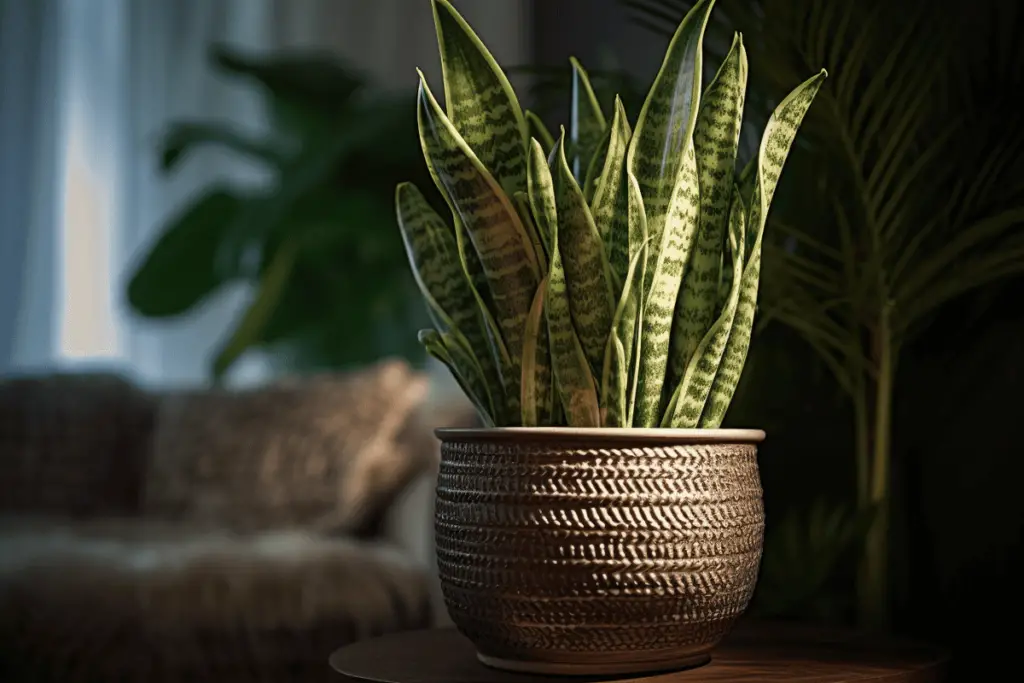
The Snake Plant is one of the best plants for dark rooms, thanks to its resilience and air-purifying properties. It thrives in low light, requires little water, and adds a modern touch with its upright, variegated leaves.
Care Tips:
Light: Low to moderate indirect light.
Watering: Every 2-3 weeks; allow soil to dry between waterings.
Bonus: Filters toxins like formaldehyde and benzene.
2. Maidenhair Fern (Adiantum spp.)
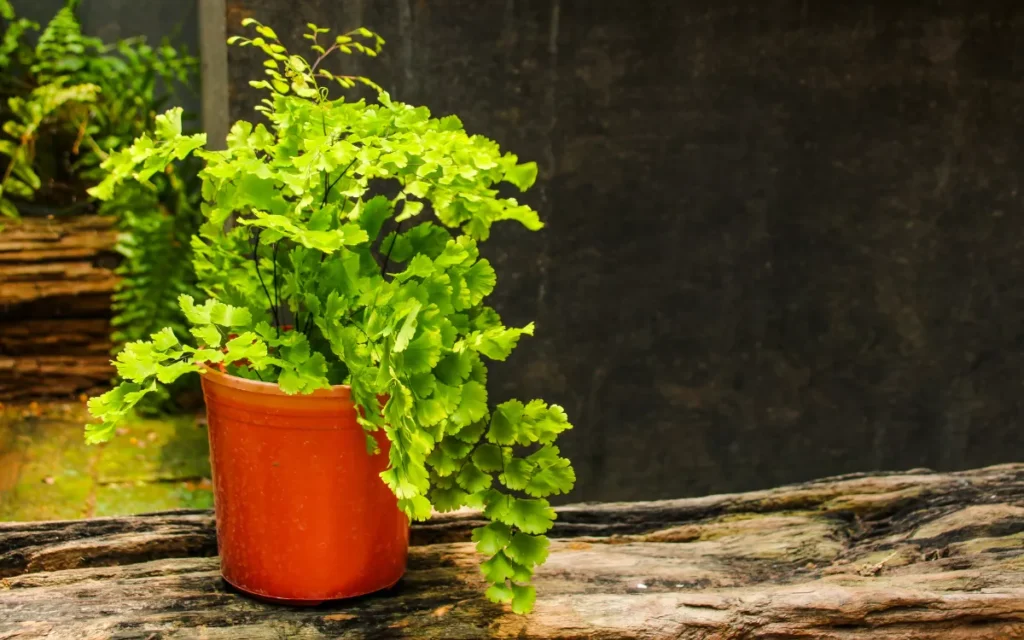
The Maidenhair Fern is a beautiful plant for dark rooms, featuring delicate, lacy foliage that brings elegance to any space. While it prefers indirect light, it thrives in humid environments, making it a great choice for bathrooms.
Care Tips:
Light: Low to indirect light. Avoid direct sun.
Watering: Keep soil consistently moist, but not soggy.
Bonus: Loves humidity—mist the leaves or place near a humidifier.
3. Parlor Palm (Chamaedorea elegans)
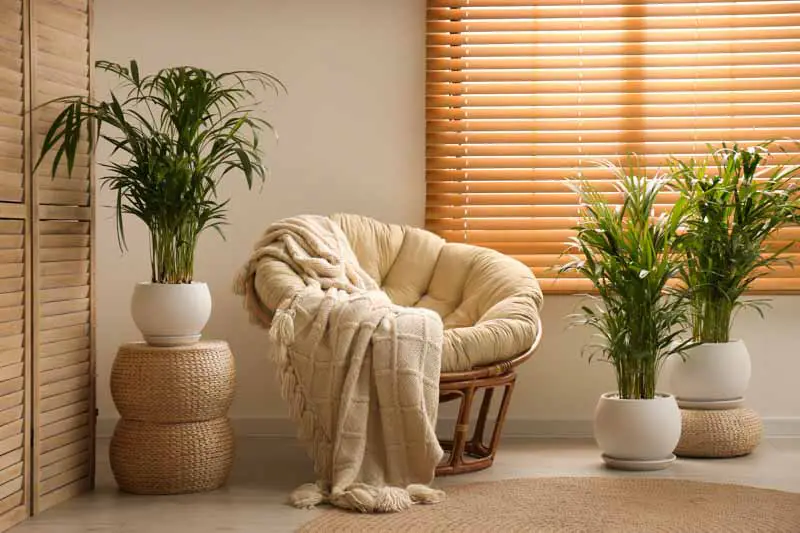
The Parlor Palm is an elegant, shade-tolerant plant that thrives in dark rooms with minimal care. Its feathery fronds add a touch of tropical charm, and its slow-growing nature makes it perfect for indoor spaces.
Care Tips:
Light: Prefers low to moderate indirect light.
Watering: Keep soil slightly moist but avoid overwatering.
Bonus: Non-toxic to pets and helps improve indoor air quality
4. Chinese Evergreen (Aglaonema spp.)
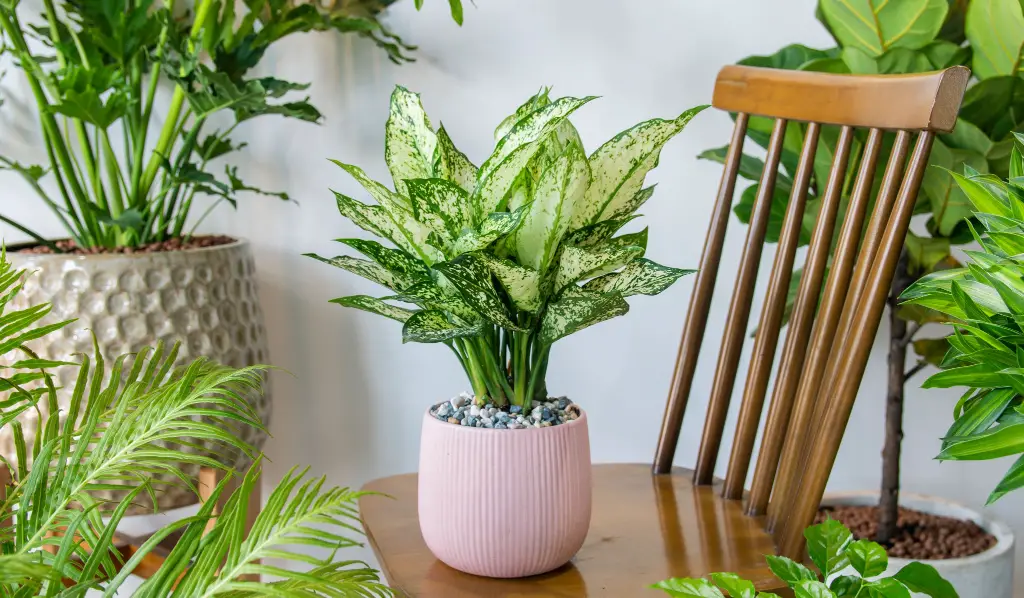
The Chinese Evergreen is a stunning plant for dark rooms, known for its attractive foliage and high adaptability. With its lush, patterned leaves, it adds a decorative touch to any space while thriving in low-light conditions.
Care Tips:
Light: Tolerates low light but prefers indirect light.
Watering: Water when the top inch of soil is dry. Avoid soggy soil.
Bonus: Excellent air-purifying plant, removing toxins from the air
5. Heartleaf Philodendron (Philodendron hederaceum)
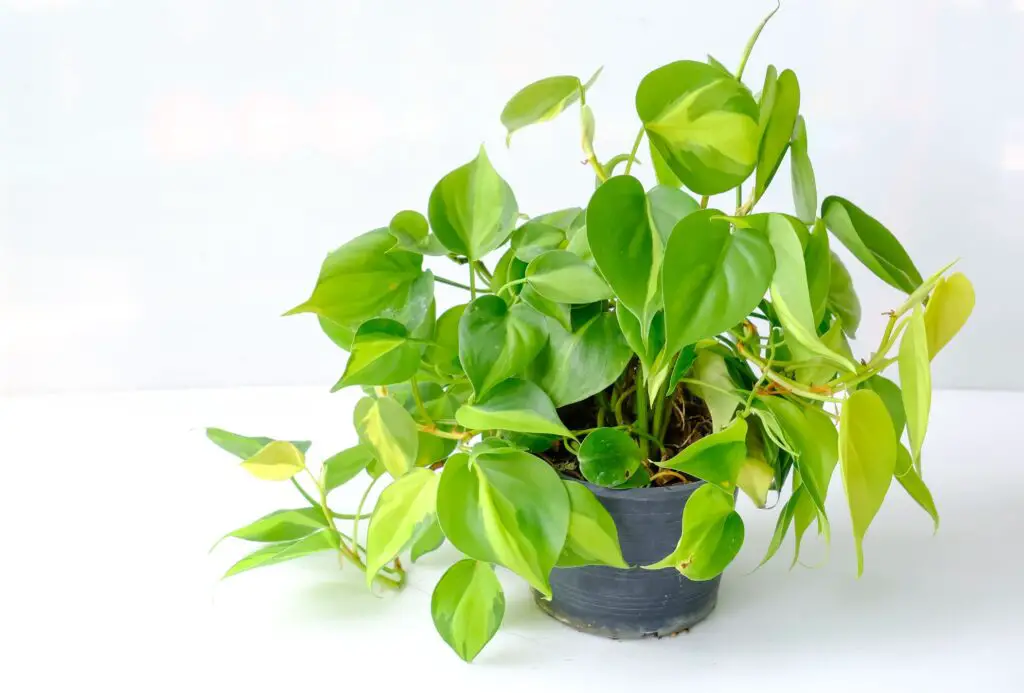
The Heartleaf Philodendron is a perfect plant for dark rooms, featuring lush trailing vines that make it ideal for hanging baskets or shelves. Its heart-shaped leaves add a touch of greenery to any dimly lit space, and it’s incredibly easy to care for.
Care Tips:
Light: Thrives in low to moderate indirect light.
Watering: Allow the top inch of soil to dry before watering.
Bonus: Fast-growing and easy to propagate from cuttings.
6. Dumb Cane (Dieffenbachia spp.)
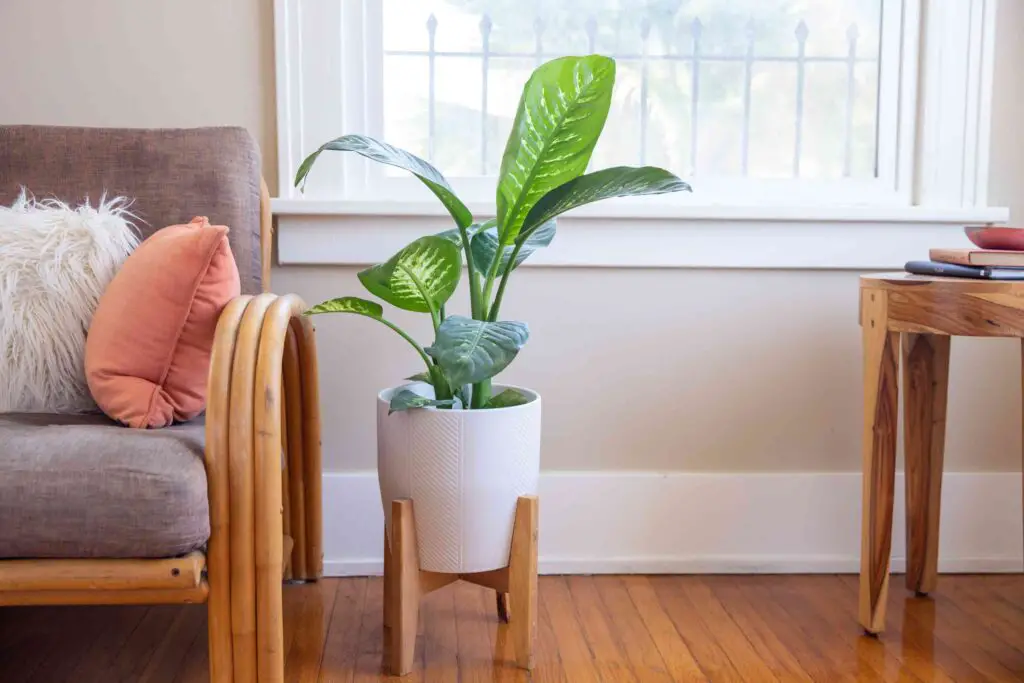
The Dumb Cane is a striking plant for dark rooms, featuring large, patterned leaves that brighten up dim spaces. It adapts well to low-light conditions and adds a bold, tropical look to indoor environments.
Care Tips:
Light: Prefers low to moderate indirect light. Avoid direct sunlight.
Watering: Keep soil slightly moist but not soggy.
Bonus: Grows quickly and adds a lush, vibrant touch to any room.
Related Topics:
7. Devil’s Ivy (Epipremnum aureum ‘Marble Queen’)
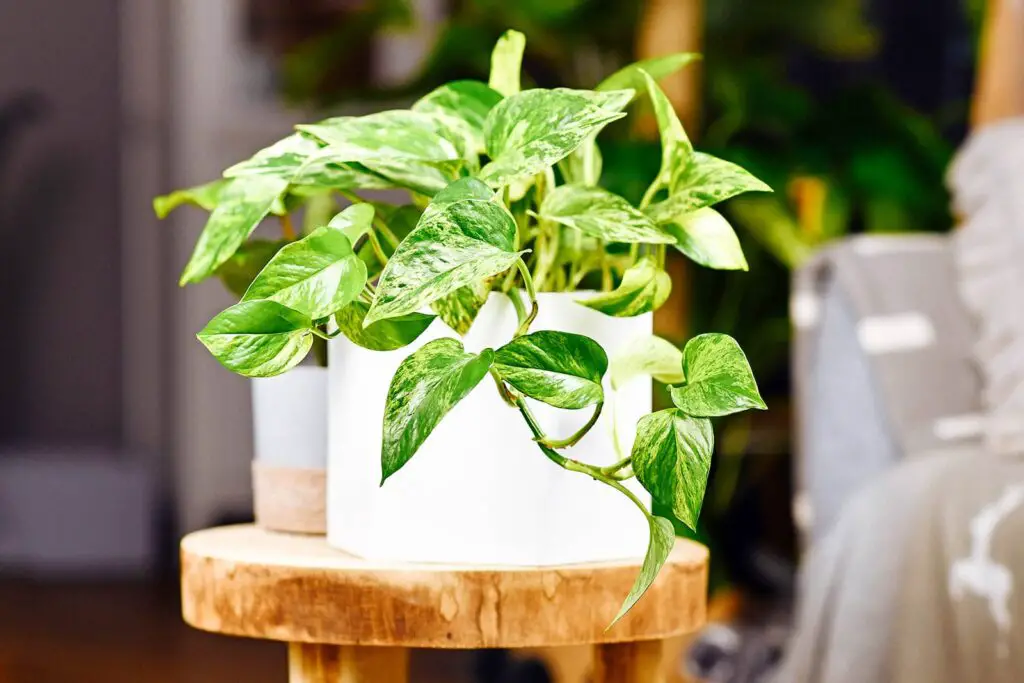
The Devil’s Ivy is a stunning plant for dark rooms, known for its unique variegated leaves that feature a mix of green and creamy white. This pothos variety is hardy, low-maintenance, and perfect for trailing from shelves or hanging baskets.
Care Tips:
Light: Tolerates low light but grows best in indirect light.
Watering: Allow the top inch of soil to dry out between waterings.
Bonus: Excellent air-purifying plant and easy to propagate.
8. Rex Begonia (Begonia rex-cultorum)
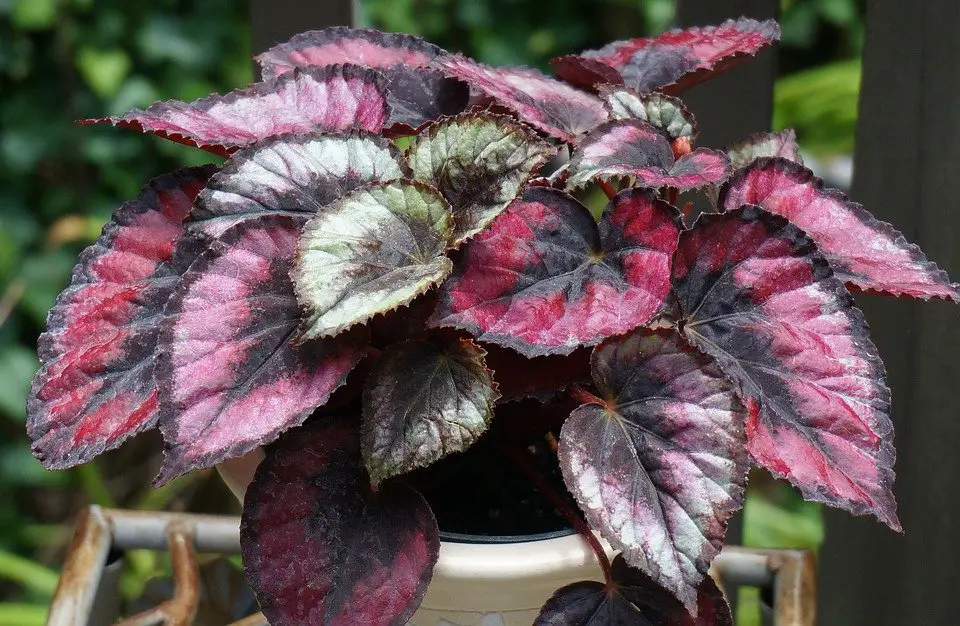
The Rex Begonia is a vibrant plant for dark rooms, prized for its colorful, textured foliage that comes in shades of green, red, purple, and silver. It thrives in low-light indoor conditions, making it a perfect decorative plant for shaded spaces.
Care Tips:
Light: Prefers low to moderate indirect light. Avoid direct sun.
Watering: Keep soil slightly moist but not waterlogged.
Bonus: Adds a pop of color to dim spaces without needing bright light.
9. Moss Terrariums (Various Mosses)
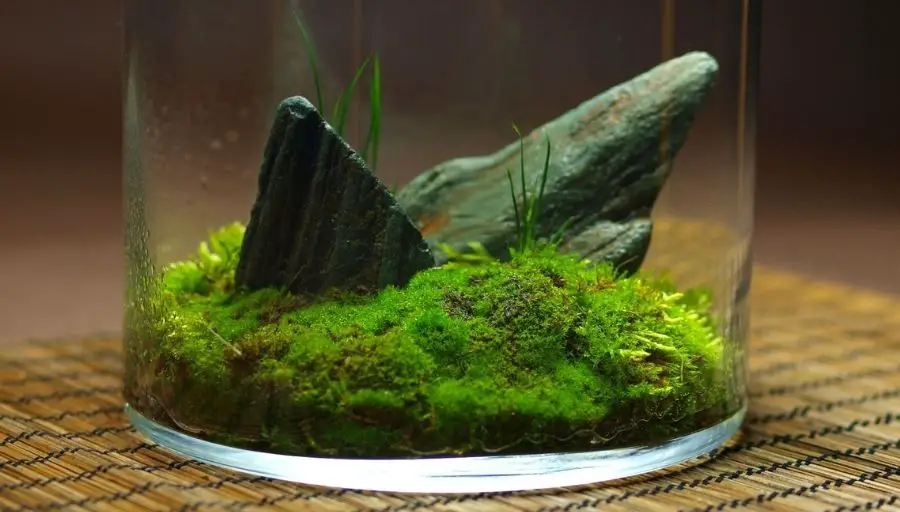
Moss terrariums are a unique and low-maintenance plant for dark rooms. These lush, miniature ecosystems require very little light to thrive, making them perfect for low-light areas. The natural humidity within the terrarium provides the ideal environment for mosses to flourish, creating a serene and tranquil display.
Care Tips:
Light: Prefer low to medium indirect light; avoid direct sunlight.
Watering: Keep the moss moist by occasionally misting it.
Bonus: Perfect for small spaces like desks, shelves, or bathrooms, and adds a calming, natural touch.
10. Bird’s Nest Fern (Asplenium nidus)
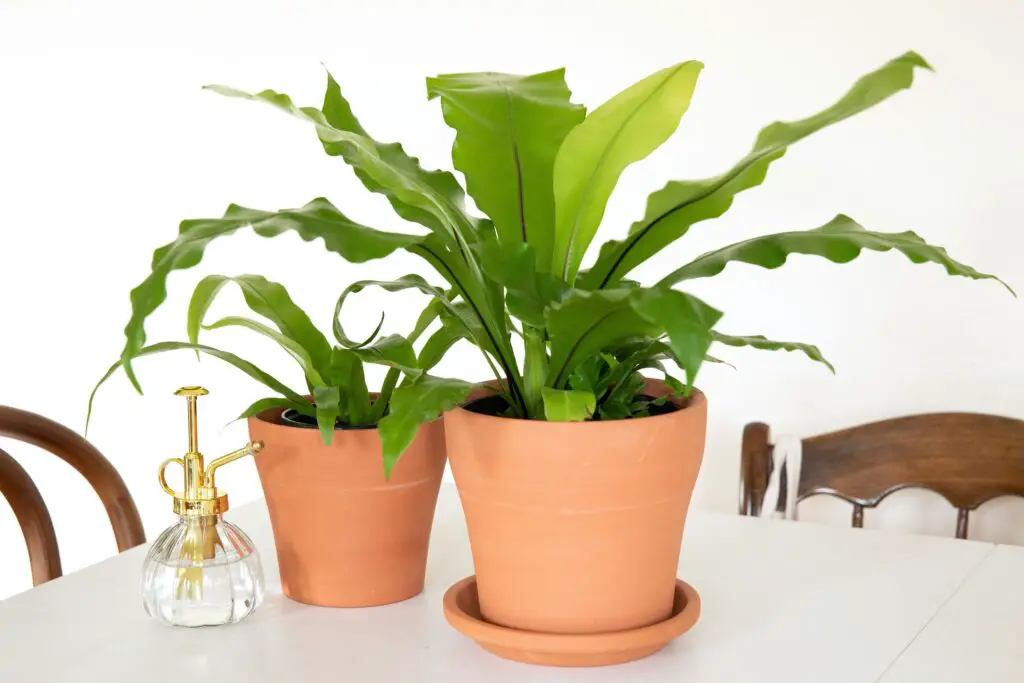
The Bird’s Nest Fern is a beautiful plant for dark rooms, known for its wavy, vibrant green leaves that create a striking focal point in any space. It thrives in low-light conditions and adds a tropical feel to dimly lit rooms, making it an ideal choice for those looking to brighten up their interiors with minimal sunlight.
Care Tips:
Light: Prefers low to moderate indirect light.
Watering: Keep soil moist but not soggy; water when the top inch feels dry.
Bonus: Ideal for bathrooms or kitchens, as it thrives in humidity.
11. Coleus (Plectranthus scutellarioides)
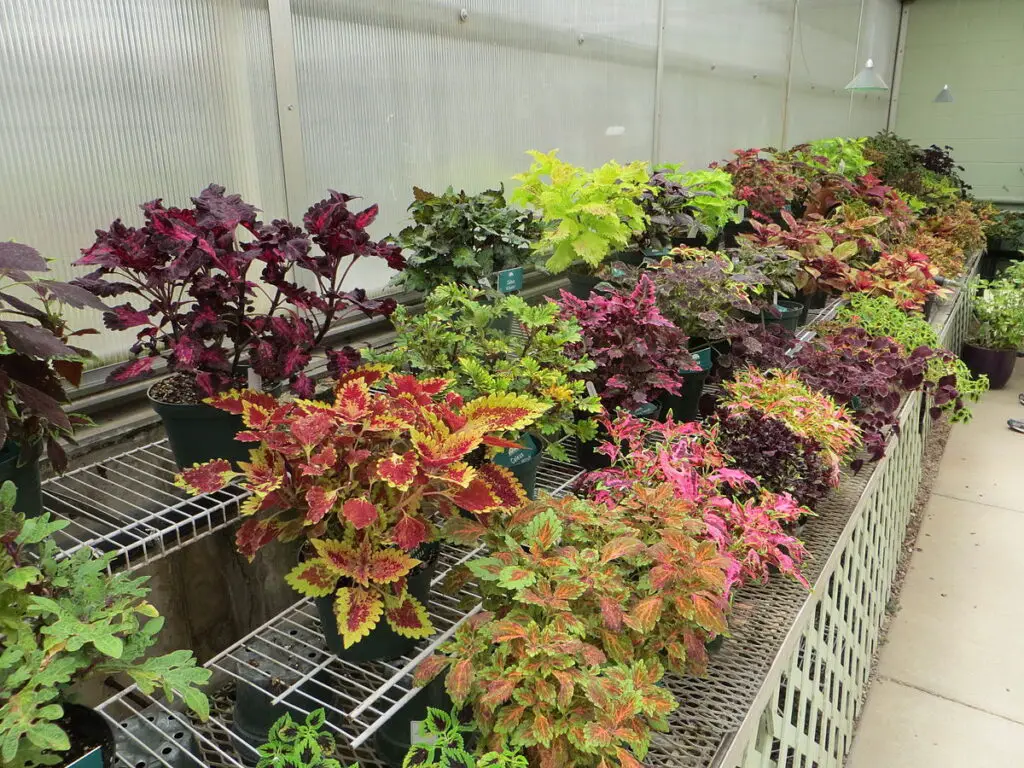
The Coleus is a stunning plant for dark rooms, known for its vibrant, multi-colored foliage in shades of purple, red, pink, and green. While it prefers indirect light, it can tolerate low light and still maintain its striking color, making it a great addition to shaded indoor spaces.
Care Tips:
Light: Prefers indirect light but can adapt to low-light conditions.
Watering: Keep the soil evenly moist, but avoid overwatering.
Bonus: Regular pruning helps maintain a bushy shape and vibrant colors.
12. Arrowhead Plant (Syngonium podophyllum)
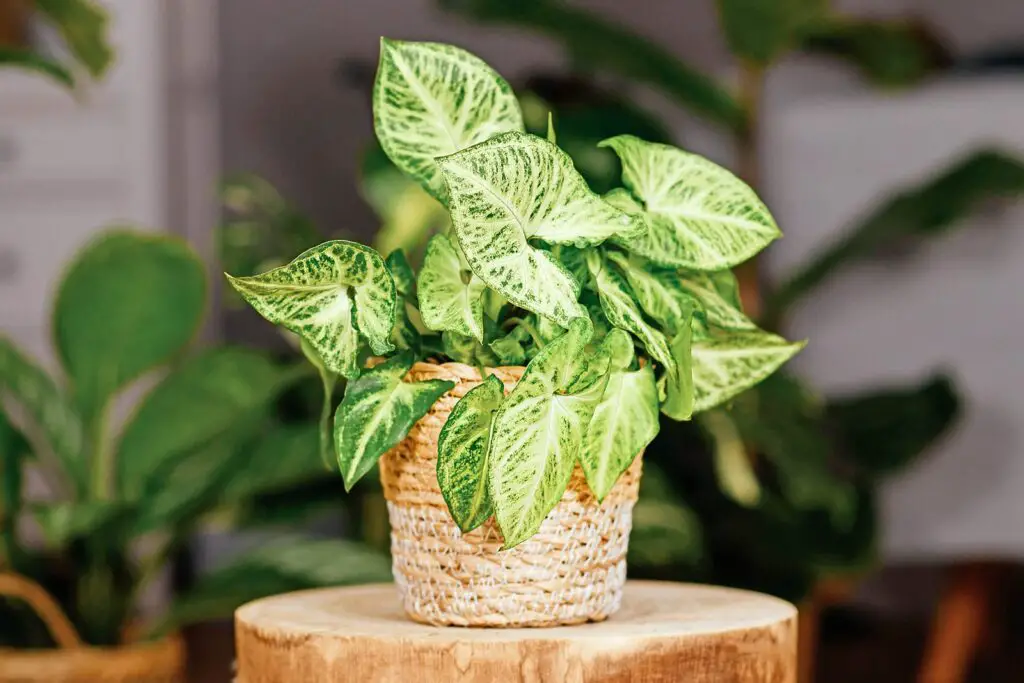
The Arrowhead Plant is an adaptable plant for dark rooms, known for its distinctive arrow-shaped leaves. It thrives in low light and can easily adjust to dim spaces, making it a perfect choice for areas with minimal natural light. Its trailing vines add a decorative touch to any room, whether in a pot or hanging basket.
Care Tips:
Light: Tolerates low light but prefers bright, indirect light.
Watering: Allow soil to dry out between waterings; water thoroughly when dry.
Bonus: Grows quickly and can be easily propagated.
13. Philodendron Birkin (Philodendron birkin)
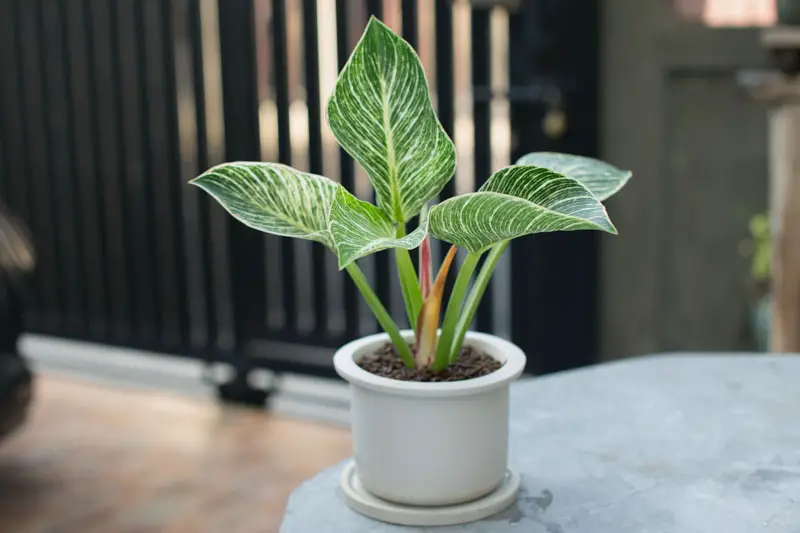
The Philodendron Birkin is a striking plant for dark rooms, known for its unique white-striped leaves that create a beautiful contrast with its deep green foliage. It thrives in indirect light, making it perfect for spaces with minimal natural sunlight while still adding a bold statement to your decor.
Care Tips:
Light: Prefers bright, indirect light but tolerates low light.
Watering: Water when the top inch of soil feels dry; avoid overwatering.
Bonus: The distinctive variegation in its leaves makes it a standout piece in any room.
14. Bitter Cress (Cardamine hirsuta)
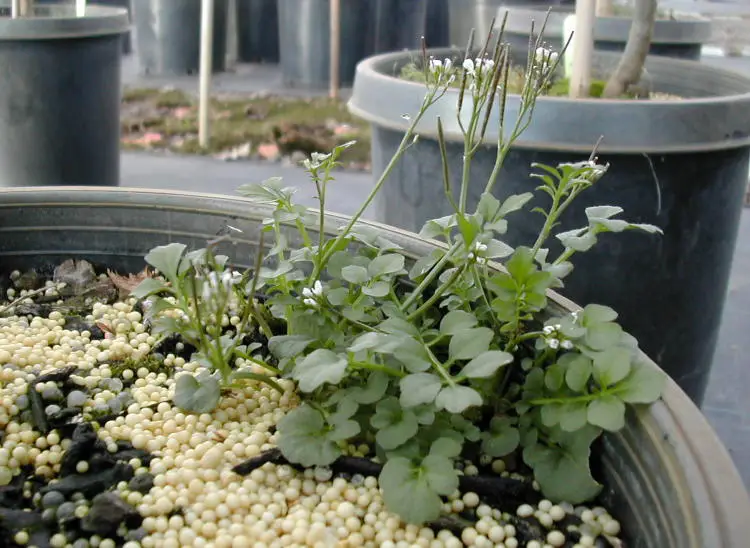
Bitter Cress is a small, easy-to-grow plant for dark rooms, known for its ability to thrive in dark, moist areas. This hardy plant requires minimal care and does well in low-light conditions, making it perfect for shaded spaces like bathrooms or offices.
Care Tips:
Light: Prefers low light but tolerates moderate indirect light.
Watering: Keep the soil consistently moist, but not soggy.
Bonus: Grows quickly and is often used as a ground cover in shaded indoor gardens.
15. Silver Satin Pothos (Scindapsus pictus)
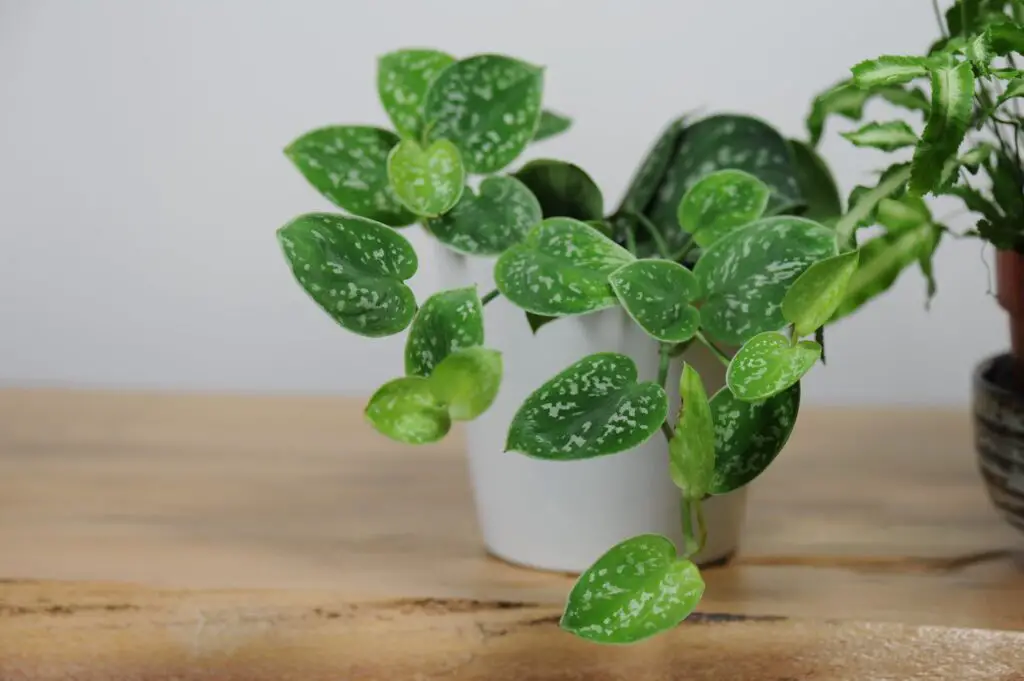
The Silver Satin Pothos is a beautiful plant for dark rooms, featuring silver-speckled leaves that bring a touch of elegance to any space. This pothos variety thrives in low-light environments and requires minimal care, making it an ideal choice for those with busy lifestyles or beginners. Its trailing vines are perfect for hanging baskets or shelves, creating a lush, cascading effect.
Care Tips:
Light: Prefers low to moderate indirect light.
Watering: Allow the soil to dry out between waterings.
Bonus: A low-maintenance, fast-growing plant that is great for air purification.
16. Clivia (Clivia miniata)
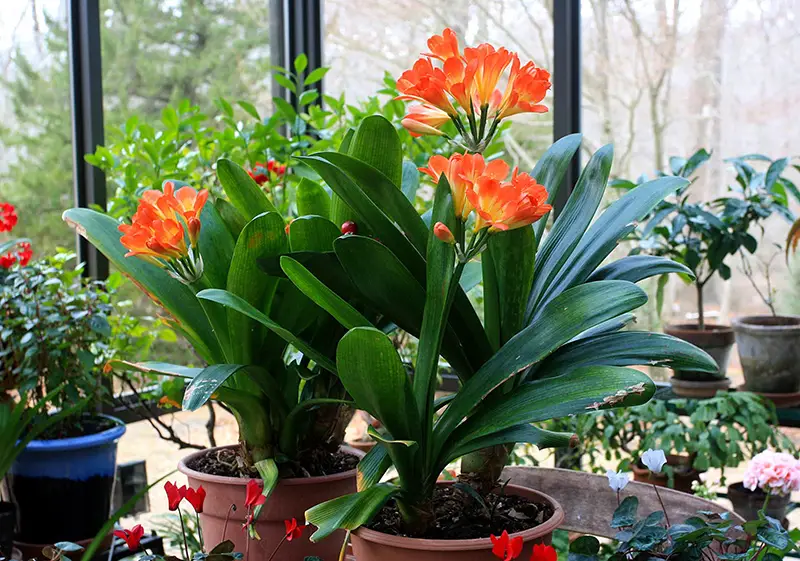
The Clivia is a stunning flowering plant for dark rooms, known for its vibrant orange flowers that bloom in spring. This plant thrives in low light and is perfect for areas with limited natural sunlight. Although it’s a slow grower, the Clivia’s bold blooms add a burst of color to dimly lit indoor spaces, making it an excellent choice for darker rooms.
Care Tips:
Light: Prefers low to moderate indirect light.
Watering: Water when the top inch of soil feels dry.
Bonus: A hardy plant that can bloom year after year with proper care.
17. Bamboo Orchid (Arundina graminifolia)
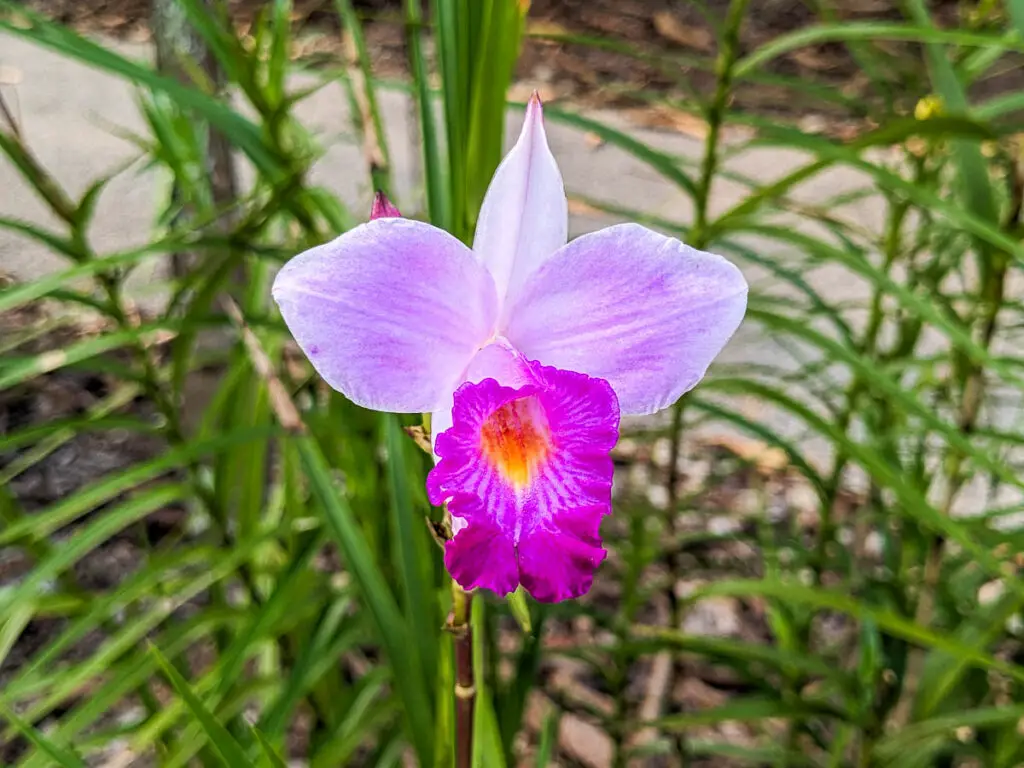
The Bamboo Orchid is an elegant plant for dark rooms, known for its bamboo-like stems and beautiful pink flowers. It thrives in low light and humid conditions, making it perfect for darker indoor spaces such as bathrooms or kitchens. Its unique appearance and stunning blooms add a touch of grace to any environment.
Care Tips:
Light: Prefers low to moderate indirect light.
Watering: Keep soil moist and provide extra humidity to thrive.
Bonus: Adds a tropical flair with its delicate flowers and bamboo-like structure.
Tips for Keeping Low-Light Plants Healthy
Caring for low-light plants in dark rooms requires some simple yet important maintenance practices to ensure they thrive. Here are a few key tips to help keep your plants healthy:
1. Proper Watering Techniques (Avoid Root Rot)
Overwatering is one of the most common causes of plant stress, especially in low-light conditions. To prevent root rot, always check the top inch of the soil before watering. If it feels dry, it’s time to water; if it’s still damp, wait a few more days. Make sure your plant’s pot has drainage holes to allow excess water to escape.
2. Rotate Plants for Even Growth
Low-light plants can grow unevenly if they are only exposed to light from one direction. To encourage even growth, rotate your plants regularly. This ensures that all sides receive some exposure to light and helps them develop symmetrically.
3. Clean Leaves to Maximize Light Absorption
Dust can accumulate on plant leaves, blocking light and preventing proper photosynthesis. Wipe down the leaves with a soft, damp cloth every few weeks to remove dust and debris. This will help maximize light absorption and keep your plants looking healthy.
4. Using Artificial Grow Lights if Necessary
If natural light is insufficient, consider using artificial grow lights. These lights can supplement the light in your dark room and help promote healthy plant growth. Choose full-spectrum LED grow lights to mimic natural sunlight, and place them close to your plants for maximum benefit.
By following these simple steps, you can ensure that your low-light plants continue to flourish and brighten up your space!
In summary, low-light plants offer an excellent solution for brightening up dark rooms and creating a calming, natural atmosphere. From the resilient Snake Plant to the vibrant Bamboo Orchid, there are numerous plants that thrive in dim light and require minimal care.
These plants not only enhance the aesthetics of your home but also improve air quality and contribute to a healthier indoor environment.
Don’t be afraid to experiment with different plants to find the best fit for your space and lifestyle. Each plant has its own unique qualities, and with a little care, you can create your own lush, low-light garden.
Remember, even low-light plants need some attention and maintenance to thrive. With proper watering, occasional cleaning, and perhaps even a little artificial light, you can enjoy a thriving indoor oasis, no matter how little natural sunlight your room gets!
FAQs:
1. What are the best ways to care for plants in low-light environments?
Plants in low-light rooms still require some care. Ensure proper watering to avoid root rot, and rotate plants occasionally for even growth. Clean the leaves regularly to remove dust, and consider using artificial grow lights if natural light is very limited. Also, be cautious about overwatering, as plants in low light typically need less frequent watering.
2. Can any indoor plants thrive in completely dark rooms?
While no plant can thrive in complete darkness, many plants can tolerate very low light conditions. For completely dark rooms, supplementing with artificial light (such as LED grow lights) will help plants like the ZZ Plant, Snake Plant, and Bamboo Orchid survive and even thrive. However, it’s important to manage expectations for growth rate and flowering.
3. How often should I water plants in dark rooms?
Plants in dark rooms typically need less water than those in brighter spaces. Overwatering can lead to root rot, so it’s best to let the soil dry out partially before watering. Check the moisture level by sticking your finger into the soil; if it feels dry a couple of inches down, it’s time to water. Always ensure proper drainage to prevent water from sitting at the bottom of the pot.

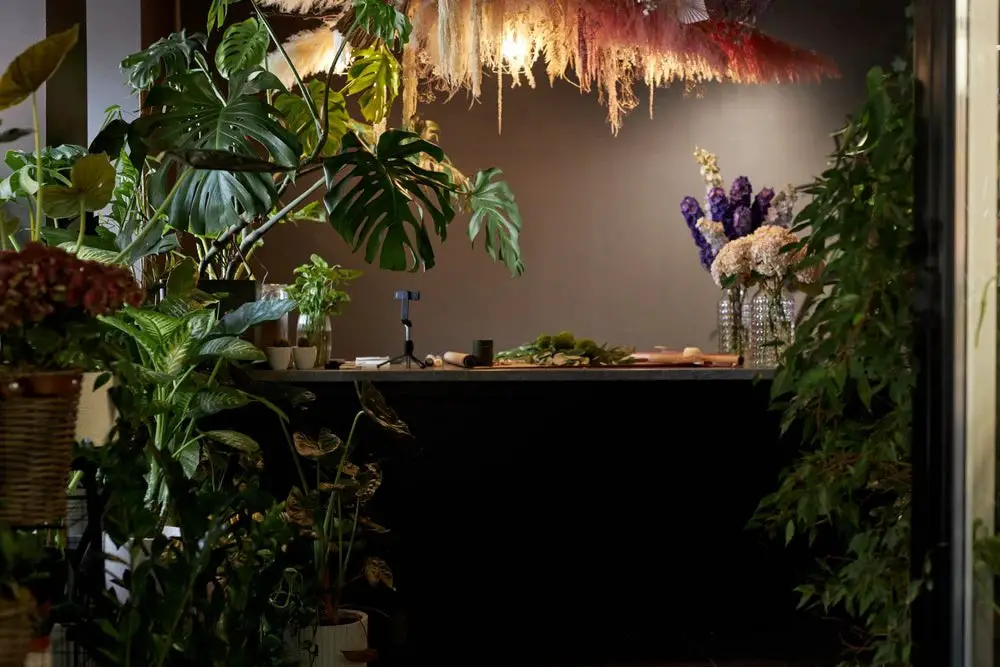
2 thoughts on “17 Best Plants for Dark Rooms: No Sun? No Problem!”